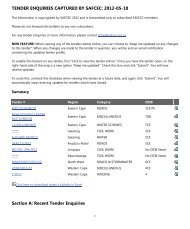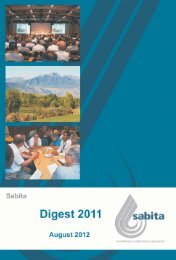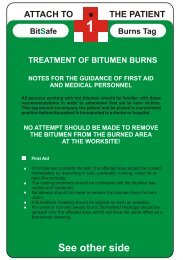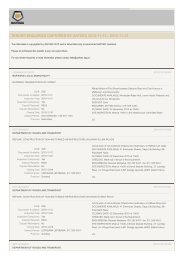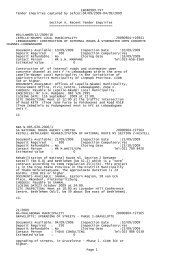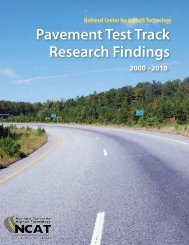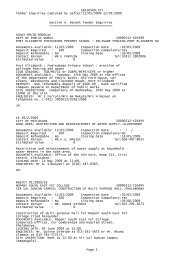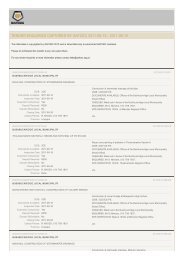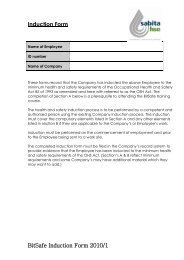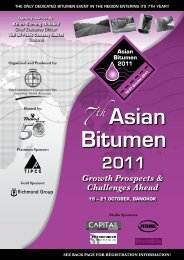DIGEST 2006 - Sabita
DIGEST 2006 - Sabita
DIGEST 2006 - Sabita
You also want an ePaper? Increase the reach of your titles
YUMPU automatically turns print PDFs into web optimized ePapers that Google loves.
Figure 1. Figure 1. Bitumen grades sampled from 4 refineries for finger printing<br />
testing was incorporated in the<br />
project and is reported on.<br />
Strategy<br />
Fingerprint testing carried out at<br />
Madison covered the following:<br />
• Standard Dynamic Shear<br />
Rheometer (DSR) testing on:<br />
º Unaged binder (with<br />
repeats);<br />
º RTFOT aged;<br />
º Pressure Ageing Vessel<br />
(PAV) aged.<br />
• Additional DSR testing on two<br />
manufacturers of apparatuses<br />
at:<br />
º 0.1% strain versus 12%<br />
strain;<br />
º Different times of day<br />
(temperature control).<br />
• Bending Beam Rheometer<br />
(BBR).<br />
Standard DSR testing at 12%<br />
strain (ε), according to SHRP<br />
protocols, was carried out. In<br />
addition, the Shear Modulus G*<br />
versus Frequency was measured<br />
at 0.5% ε for bitumen from four<br />
SA refineries, as shown in Figure<br />
2.<br />
The DSR results show particularly<br />
good agreement between the<br />
measurements at different strain<br />
levels, verifying that the 12% ε is<br />
within the linear range of testing.<br />
This verifies that SHRP’s reasoning<br />
for adopting 12% ε as their<br />
standard protocol is sound and<br />
applicable to SA bitumen too.<br />
The SHRP SuperPave Grading<br />
System classifies a binder by<br />
defining the average 7-day<br />
maximum pavement design<br />
temperature (ºC) as well as the<br />
minimum pavement design<br />
139



